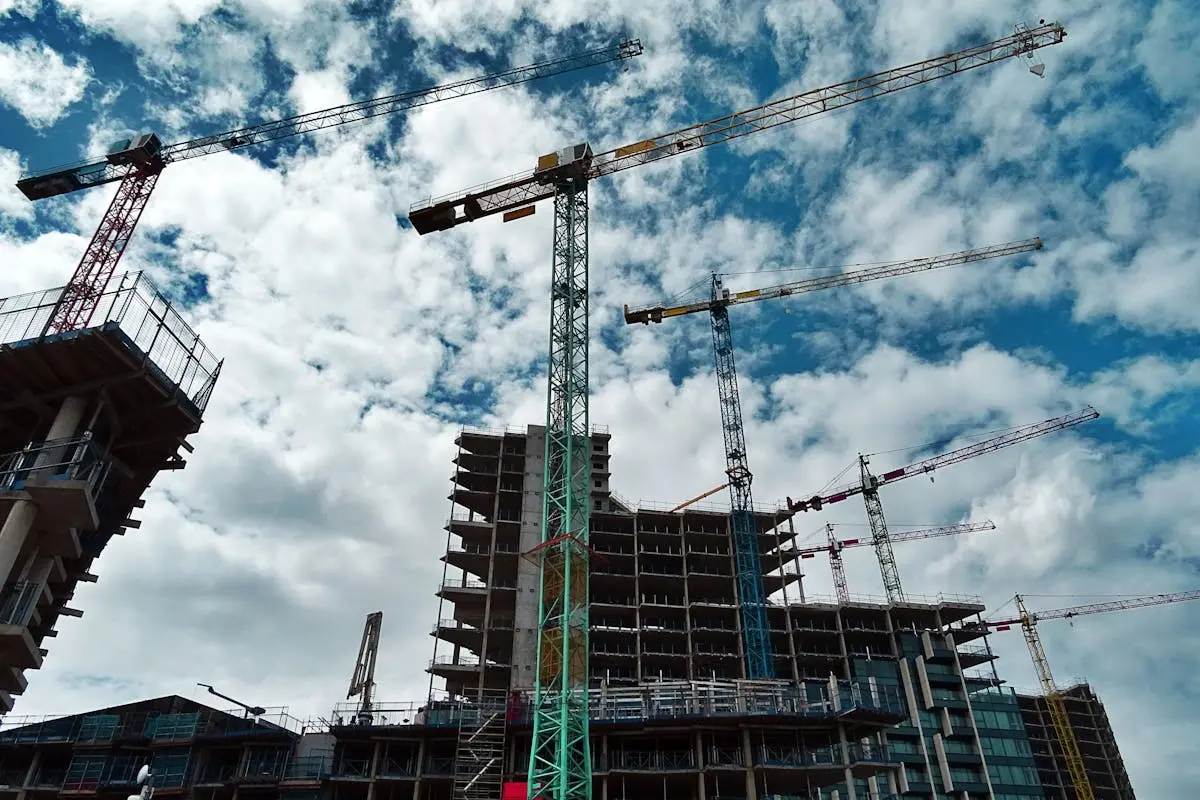How AI is modernizing pursuits

In the competitive world of AEC, pursuits are a strategic advantage. But with rising expectations and tight timelines, traditional approaches are no longer enough.
Enter AI, a force multiplier. This blog series explores how AI is helping AEC pursuit teams win more work.
Reach out to david@zampa.ai to learn more.
Understanding the Role of AI in Construction
Artificial Intelligence plays a pivotal role in the construction sector by automating routine tasks, analyzing vast amounts of data, and improving decision-making. From predictive analytics to natural language processing, AI offers technology that enhance how pursuits are managed.
Imagine a world where pursuits are crafted with the help of sophisticated algorithms that learn from past projects. This is not a distant dream—it's reality. With AI, construction firms can examine trends and gather insights that traditional methods might overlook. This capability allows teams to not only understand what has been done before but to apply that knowledge proactively, resulting in pursuits that are not only thoughtful but strategically sound.
The integration of AI in the construction workflow also means that teams can focus on what truly matters: building relationships and crafting compelling narratives around their pursuits. As mundane, repetitive tasks are managed by intelligent systems, professionals can allocate their time more efficiently and creatively.
Streamlining Pursuit Creation with AI
Creating pursuits can be time-consuming and prone to errors. AI-powered technology help streamline the pursuit creation process, automatically generating templates, pulling data from previous projects, and ensuring consistency in style and format.
Moreover, think about the power of having an AI assistant that learns from your writing style. By utilizing machine learning, this technology can adapt to individual preferences, creating personalized templates that reflect your company's voice. This not only saves time but also builds a cohesive brand identity across all pursuits.
Furthermore, AI can help in gathering real-time information about the project, such as site conditions and material availability, ensuring that pursuits are not only well-written but also practical and informed. Thus, your team will be equipped to respond quickly to any changes, strengthening your pursuit's competitiveness.
In a world where deadlines are often tight, the ability to create accurate pursuits efficiently can make all the difference. AI technology can turn what used to be a draining process into one that is not only manageable but even enjoyable, fostering creativity rather than stifling it.
Enhancing Accuracy and Reducing Costs
AI algorithms analyze historical data to improve the accuracy of cost estimations, reducing the likelihood of budget overruns. By adopting AI, construction companies can save money while ensuring that their pursuits are competitive and realistic.
Beyond just numbers, AI technologies provide a deeper understanding of the factors that contribute to costs. For instance, by identifying patterns in previous projects—what went over budget, and why—companies can create more informed and realistic financial projections. This insight is invaluable not just for current pursuits but for building a stronger foundation for future projects.
Moreover, AI technology can simulate various project scenarios, enabling teams to explore the potential financial outcomes of different approaches. This predictive analysis empowers construction firms to make decisions that drive efficiency, ensuring that pursuits are not only cost-effective but also strategically aligned with client expectations.
Fostering Collaboration Through AI Platforms
AI platforms facilitate better collaboration among project stakeholders. By using shared digital workspaces and communication technology powered by AI, teams can work together seamlessly, sharing insights and updates in real time, which ultimately leads to stronger pursuits.
Imagine every team member having instant access to project data, documents, and updates at their fingertips. This level of connectivity fosters transparency, which is critical in pursuit management. When everyone has a clear view of how their contributions fit into the larger picture, collaboration flourishes, and pursuits become a collective showcase of expertise.
Furthermore, AI technology can analyze team interactions, suggesting ways to improve communication or identify potential roadblocks before they become problematic. This proactive approach to collaboration ensures that teams can respond swiftly, keeping projects on track and pursuits well-aligned with client needs.
Case Studies: Success Stories of AI in Pursuits
Several construction firms have reported improved outcomes by incorporating AI into their pursuit management processes. By examining these success stories, we can glean important lessons on the effectiveness of AI solutions in real-world scenarios.
For instance, one leading construction firm integrated AI into its pursuit process and reported a remarkable 30% reduction in pursuit turnaround time. By automating data retrieval and template generation, the team could focus more on their strategy rather than administrative tasks. This shift not only improved their pursuit quality but also increased their win rates significantly.
Another example comes from a mid-sized firm that used AI-driven analytics to re-evaluate their bidding strategies. By understanding supply chain dynamics and historical performance data, they refined their approach, which led to winning more bids at lower costs. These stories exemplify how AI is not merely a tool for efficiency but a catalyst for growth and innovation.
Embracing the Future of AI in Pursuits
AI is not just a buzzword; it's a transformative technology that is changing the landscape of pursuit management in construction. As the industry continues to embrace these technologies, businesses that leverage AI will find themselves at a significant advantage, enabling greater efficiency, accuracy, and competitiveness.
The future of construction pursuits is here, and with it comes the promise of smarter, more streamlined processes that lead to project success.
.svg)
